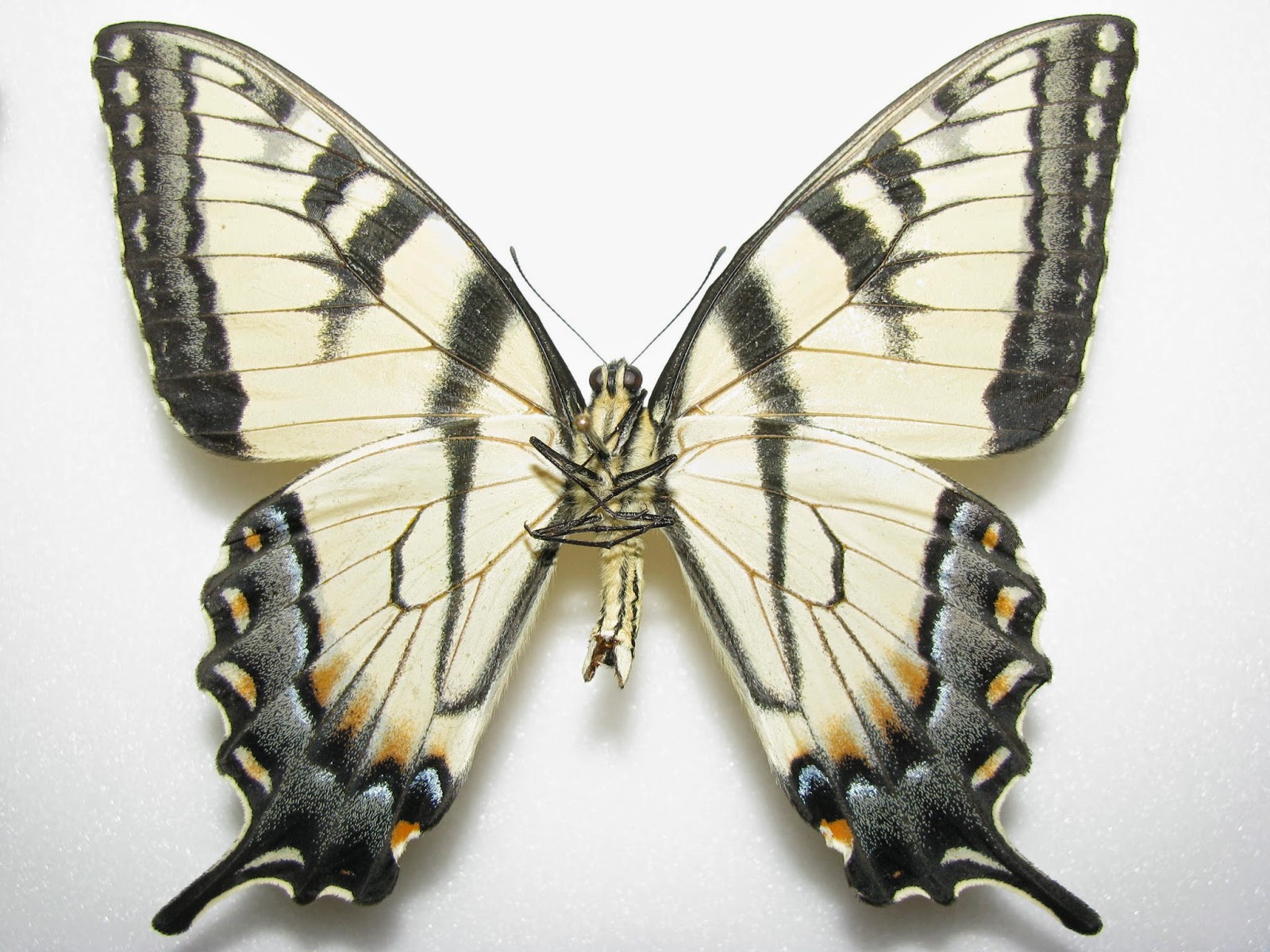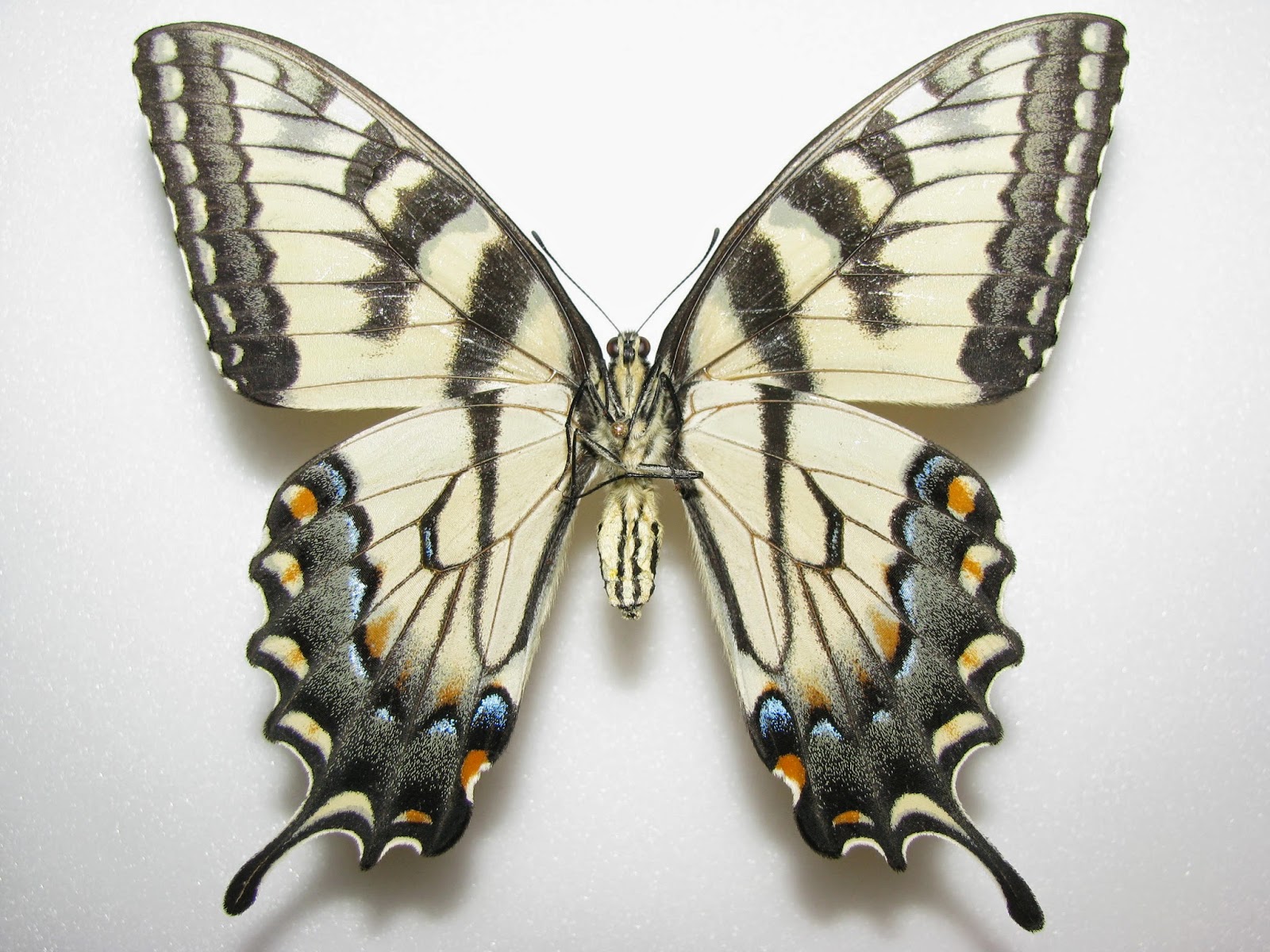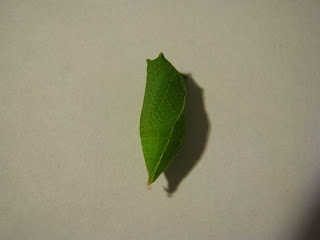Actias luna is a common species in Canada and the USA, but is rarely encountered because of their short adult lifespan and the fact that most moths are nocturnal. This moth is found in the eastern half of the USA, and in Canada, ranges from Nova Scotia to the most eastern parts of Alberta. Although widely distributed, it is never extremely common in any particular area to be considered a pest. Most silkmoths have many natural predators and parasites which keep their populations in check. Only about 1% of all the eggs produced by a female make it to adulthood to further the next generation. In the north, this moth only has a single generation per year. Around NY and NJ, the climate is sufficient that one can find 2 generations per year. South of the Ohio valley, there are at least 3 generations. In Louisiana and Florida, adults can be found every month of the year. Depending on location and brood, there can be some variation in color, but generally, the luna moth is a beautiful pale green with a purple to maroon border on the leading edge of the forewings. Both the forewings and hind wings have conspicuous eye spots, and the hind wings have elongated tails which is unique among North American Saturniidae. The sexes show no constant wing differences but are easily distinguished by the large feathery antennae of the male and relatively slimmer antennae possessed by the females. When female luna moths emerge from their cocoons, they typically don't fly right away in order to conserve energy. Instead, they get the males to come to them by releasing a pheromone (chemical scent) into the air. The large male antennae are exceedingly sensitive to this scent and males can be attracted to a female luna moth from several miles away. Female luna moths generally have larger abdomens than the males, but using this characteristic alone to differentiate the sexes is not reliable since the female abdomen will decrease in volume as ova are laid. There are also ways to differentiate the sexes during the pupal stage. The larger size of the future male antennae are apparently by examining the pupal casing. However, the term "larger" is relative and unless one has a clearly female pupa for comparison, just how large is large enough is ambiguous. A better way to discern the sexes is the presence of two longitudinal grooves on the ventral surface of the fourth and fifth abdominal segments of female pupae which are lacking in males.
The easiest way to obtain Actias luna for rearing is probably during the adult stage. The moths are attracted to UV light and if one is lucky enough to capture a female, it is highly probable that she has already mated (or else she wouldn't be flying around probably) and will produce fertile ova. I did not look for this species on purpose this year, but a friend found one clinging to their kitchen screen one morning and was kind enough to alert me. I recognized that it was a female and placed her in a cardboard box to obtain eggs. In the wild, of course these moths will fly around and deposit ova on appropriate host plants, but in captivity, they will deposit their eggs on just about anything (they have nothing to lose). In fact, if a female is kept from mating, it will still deposit eggs after a few days even though all those ova would be infertile. Below is a female luna moth and some of her ova.
She didn't lay too many eggs for me, and I suspect that she was already several days old when found. Most of her eggs were probably already deposited in the wild. I was surprised because her wings were still in relatively good shape. Trying to obtain this species any other way is probably very difficult. Finding eggs and larvae would be like looking for needles in a haystack. Their cocoons are also very difficult to find because they are well camouflaged and hidden in the leaf litter rather than being affixed to a tree branch.
The female luna moth I had laid a couple of dozen ova for me. I knew that there was a good chance she had already mated, but one can never be 100% sure, and I waited anxiously to see if these ova would hatch. Luckily, about 10 days later, I had a bunch of tiny green and black larvae. Luna moth larvae are solitary feeders throughout their lives.
Actias luna larvae have been documented to use a variety of host plants, though there are regional preferences. For example, many sources will state that northern populations prefer white birth (Betula papyrifera). Some common host plants for this species includes birches, walnuts, hickories, butternuts, pecans, sumacs, sweetgum and persimmon. I raised my larvae on staghorn sumac (Rhus typhina) primarily because of ease of access.
The above pictures are of second and third instar larvae. Starting around the fourth instar, I set them on host plants outside, protected by mosquito netting, to finish the rest of their larval development. This is done for a few reasons. Many Saturniidae larvae do not do well when raised in large numbers in captivity. Crowding and poor air circulation put them at risk for infectious diseases and I did not want to lose what few larvae I had. As they grow, their food requirements also increase, and it becomes difficult to supply them with enough fresh leaves every day. It's easier to just put them on a living plant. Lastly, I also wanted to expose the larvae to natural temperatures and photoperiod so that they hibernate through the winter instead of emerging as adult moths in the fall. During the fourth instar, if larvae experience less than about 12 hours of sunlight, they will likely hibernate. More than 16 hours of sunlight per day, and they will develop directly into adult moths and skip the hibernation process. In between, well, you get a mixture.
Above are fourth and fifth instar larvae. Finally, when the fifth instar larvae are about to spin their cocoons, they change from bright green to a light maroon color, shown below. Fully grown larvae reach about 70 mm in length.
It should be noted that in general, it's the larvae which are going to hibernate that show this color change (rare exceptions). If the larva is going to develop directly into an adult moth, it will remain green prior to spinning its cocoon. The larva will take about half a day to construct its cocoon. The cocoon has a single compact layer and is rather flimsy compared to cocoons built by some of our other native Saturniidae.
After the cocoon is constructed, the larva inside will prepare to shed its skin one final time in 2-5 days (depending on temperature) to produce the pupa which will endure the cold winter temperatures. The pupae which go into hibernation need this cold period to break their dormancy and induce normal development. Cocoons may be stored in many ways during this period. Some people store the cocoons outside, protected by a container or mesh so that birds and rodents don't eat them in the winter. Other people leave them in an unheated garage. I keep my cocoons in the fridge, occasionally misting them to maintain humidity (some people don't mist and the cocoons do just as well). When spring arrives, the cocoons will be moved outside so that they experience outside environmental conditions and develop at the same rate as wild luna moths. This way, when the adult moths emerge, there will likely be other adult moths in the wild so that they can find each other, mate, and produce the next generation.
Adult moths typically emerge in the morning but afternoon emergences are known. Mating normally occurs in the first hours after midnight and the pair may stay together until the following evening. Egg laying begins the following night and continues for several nights. The ova are deposited singly or in small groups on both surfaces of a host plant leaf. Female luna moths can lay around 250 eggs but some large females can produce as many as ~400!


































































